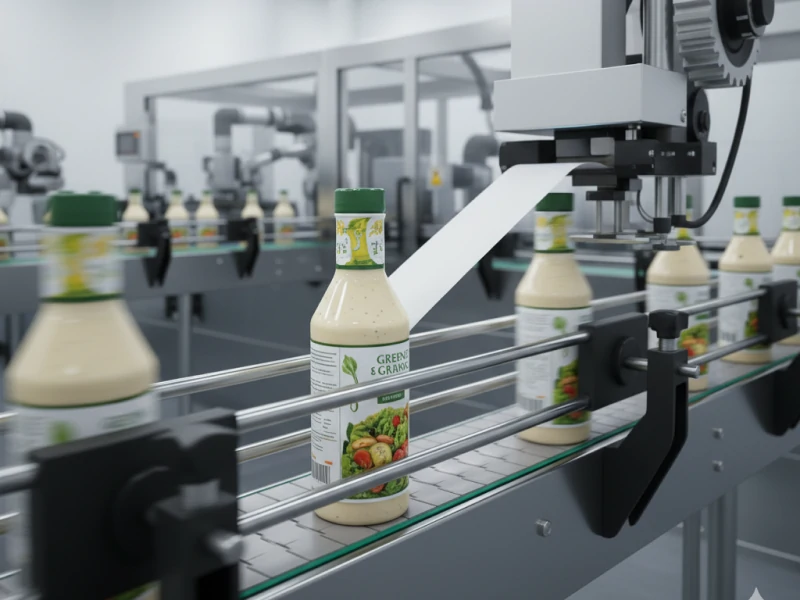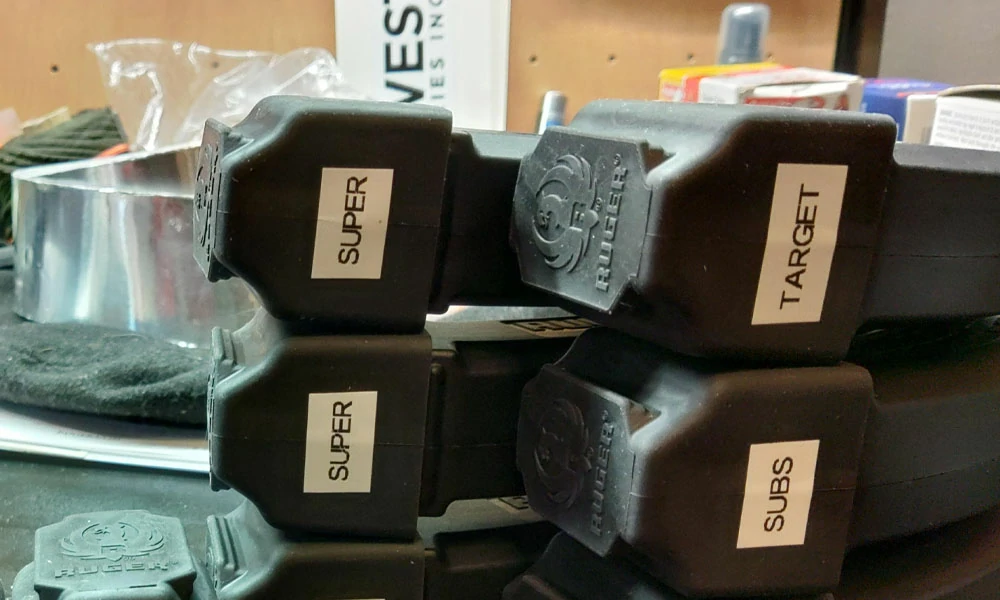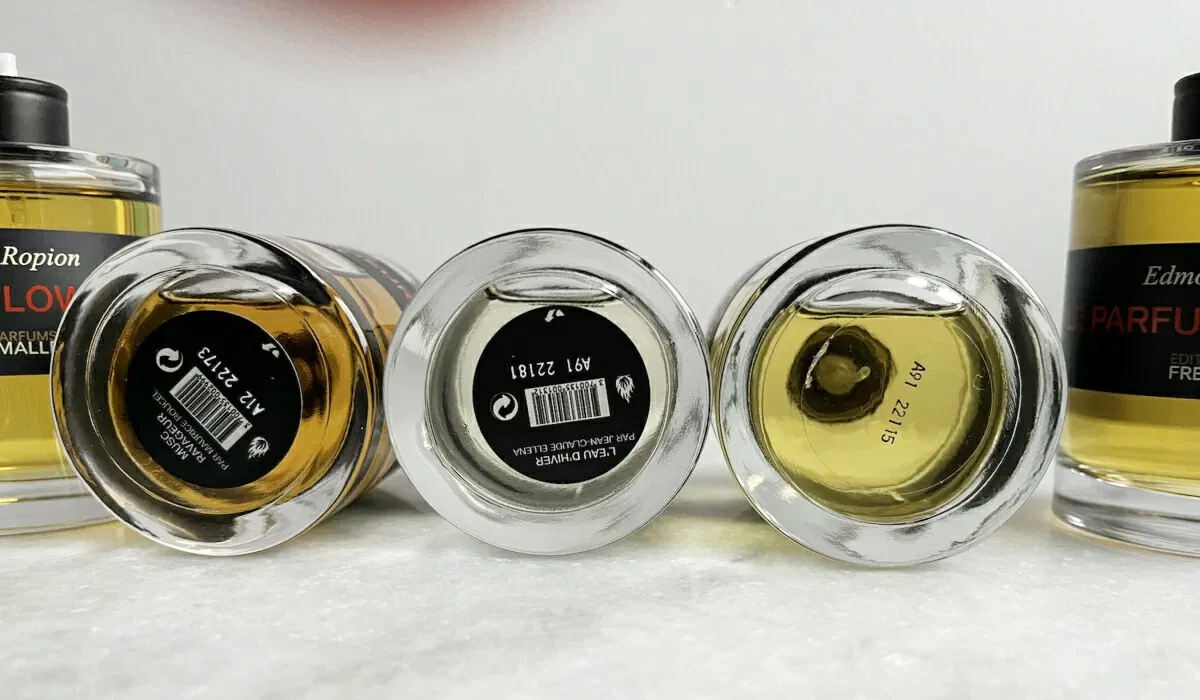
Labeling the bottom of perfume bottles is an essential aspect of fragrance packaging, ensuring compliance with regulatory standards, promoting brand identity, and providing customers with important product information. The process, however, is not as simple as just placing a sticker at the bottom. There are several factors to consider, including the materials used, the labeling process itself, and the regulatory requirements that need to be met.
Why Label the Bottom of Perfume Bottles?
In many countries, laws and regulations mandate that specific information must be included on the packaging of cosmetic and personal care products, including perfumes. Labeling the bottom of perfume bottles serves multiple purposes:
- Ensures required info like ingredients and batch numbers.
- Helps consumers quickly identify the brand and product type.
- Helps with storage without cluttering the main label.
- Verifies authenticity with batch codes.
- Prevents wear and tear on visible labels.
- Uses extra space for necessary info.
- Maintains clean design.
- Provides essential details such as the fragrance name, ingredients, and volume.
What If There’s Not Enough Space for Label Information?
If the label is too small or the text is hard to read due to design, the product may not comply with regulatory requirements for prominence and clarity. Creative solutions like booklet labels, fold-out labels, or peel-back labels can provide the necessary space for ingredients, instructions, and warnings.
What Should Be Included in the Perfume Bottle Label?
The bottom label on perfume bottles must contain certain mandatory and optional information. These details vary based on the region of sale and the specific regulations of each market. Key elements typically include:
- Fragrance Name: This is the perfume’s brand and scent name.
- Volume or Net Weight: The size of the bottle is essential for consumer clarity and regulatory compliance.
- Ingredients: Many markets require an ingredient list, particularly if the perfume includes allergens or other regulated substances.
- Manufacturer Details: Information about the manufacturer or distributor, including contact details or country of origin.
- Batch Number or Lot Code: This allows for traceability in case of quality issues or product recalls.
- Expiry Date or Manufacturing Date: Depending on local regulations, these dates may need to be clearly visible.
- Warning or Caution Symbols: Depending on the ingredients or the country, safety warnings may need to be included (e.g., flammable symbols).
- Country of Origin: Some markets require the country where the product is made to be listed.
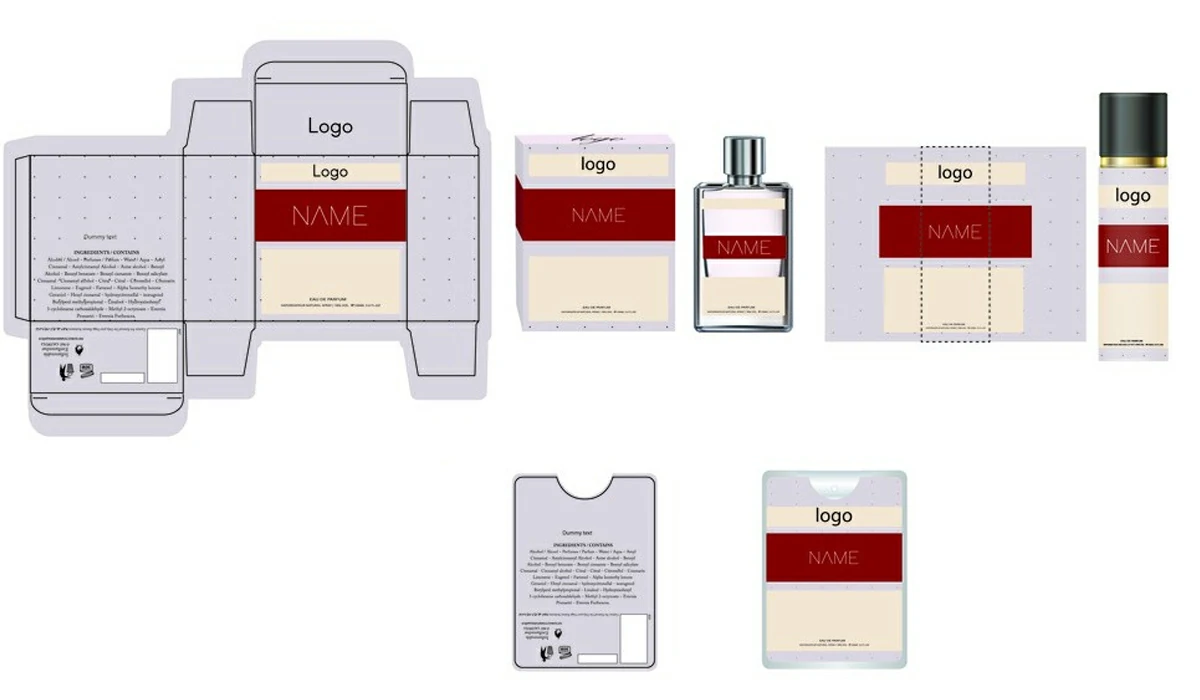
Why is it Important to Display Information Clearly on Perfume Labels?
Consumers rely on accessible, visible information. If key details are difficult to find or read, studies show 75% of consumers will leave the store and research the product online instead. Ensuring proper label space and clarity can help meet consumer expectations and regulatory compliance.
Perfume Bottle Labeling Material Considerations
Choosing the correct label material is critical to ensure durability and legibility. Since perfume bottles are often made of glass and exposed to moisture, UV light, and friction, the label needs to be resilient. Key material options include:
Paper Labels
Cost-effective but less durable. Paper labels may require special coatings or lamination to improve water and wear resistance, especially for perfumes exposed to humidity.
Vinyl or Plastic Labels
More durable and moisture-resistant, making them ideal for perfume bottles. These materials are less likely to tear, fade, or degrade in humid or frequently handled environments.
Foil or Metallic Labels
These labels provide a luxurious, premium appearance. Metallic finishes not only enhance the aesthetic appeal of the packaging but also offer resistance to moisture and wear.
Shrink Sleeves
Covering the entire bottle, shrink sleeves create a smooth, seamless look. They are highly durable and provide full protection against environmental factors such as moisture and UV light, making them perfect for high-end packaging.
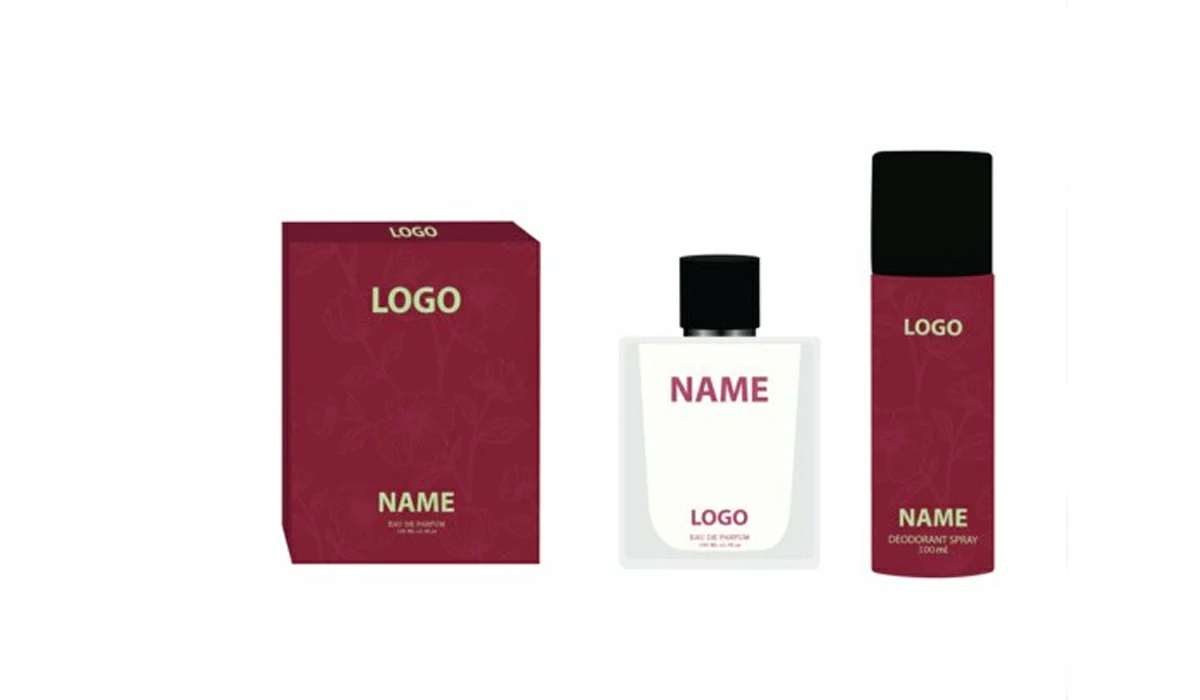
Trends in Perfume Bottle Packaging Design
Perfume bottle packaging is more than just a protective container—it’s an extension of the brand and an essential part of the consumer experience. While not all of the emerging design and labeling trends are directly applicable to perfume packaging, it’s helpful to explore them and see which ideas align with your brand’s philosophy.
- Transparent Packaging: See-through bottles to highlight the product’s color.
- Holographic and Metallic: Shiny, reflective elements for a premium feel.
- Retro-Futurism: Neon colors and bold gradients mix with nostalgic elements.
- Soft Pastels: Calm, natural colors for a serene aesthetic.
- Unconventional Shapes: Artistic, unique bottle forms for a standout look.
- Minimalism with Detail: Simple designs with luxurious, intricate details.
- Storytelling Packaging: Designs that reflect a brand’s personality or social causes.
- Balanced Layouts: Clean, refined designs with well-structured fonts.
- Transformation Art: Designs symbolizing change or evolution.
- Eco-Conscious Packaging: Sustainable materials and ethical design practices.
- Abstract Blurred Colors: Vibrant, dreamy color gradients to catch attention.
Perfume packaging should align with the fragrance’s essence, using trends that resonate with the target market and stand out in the marketplace.
Packaging Considerations
Key factors to consider include:
- Protection during Transport: The packaging should be robust enough to prevent damage to both the perfume bottle and the label during transportation. Custom inserts, foam padding, or cardboard dividers are often used.
- Aesthetic Appeal: The packaging should complement the fragrance’s luxury or aesthetic positioning. High-end perfumes often come in beautifully designed boxes that align with the fragrance’s identity.
- Eco-Friendly Packaging: Consumers are increasingly concerned about sustainability. Using recyclable materials for both the bottle and packaging can appeal to environmentally conscious buyers.
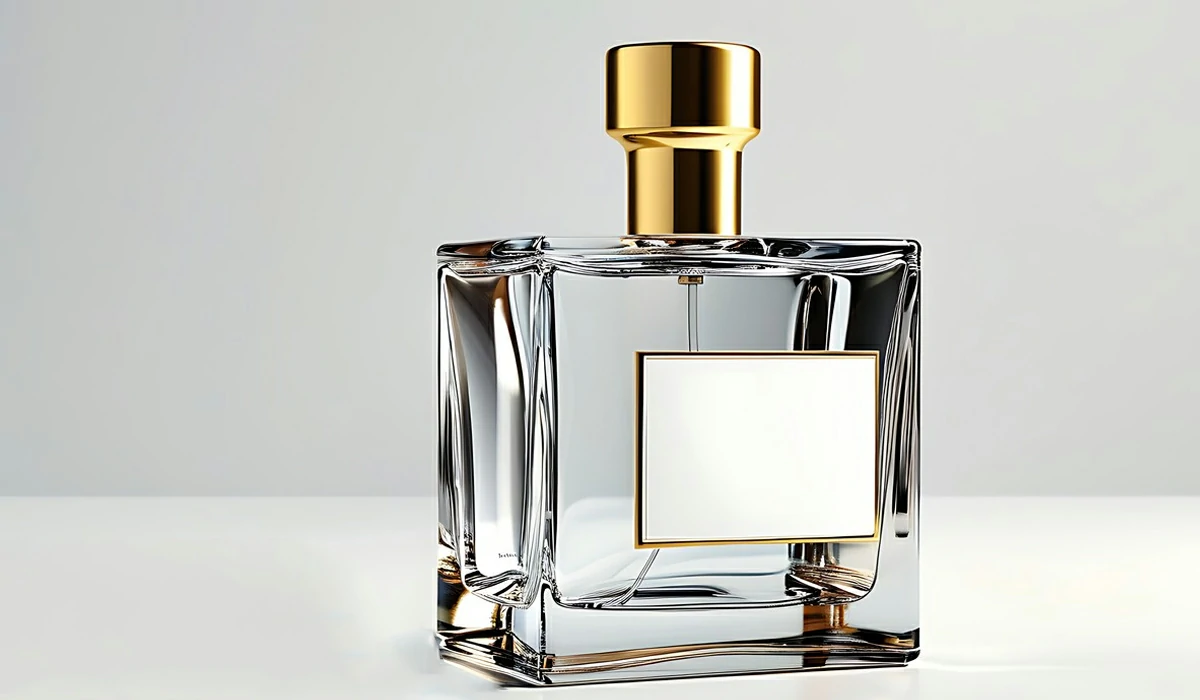
How to Label Bottom of Perfume?
For perfume bottles, accuracy and neatness are essential, as any misalignment can reduce the product’s appeal. Perfume bottle labels must be made from materials that can withstand handling, moisture, and wear, especially since the bottom of the bottle may come into contact with surfaces. Labels should include important details like batch numbers, expiration dates, or ingredient information.
For small batches or custom orders, manual labeling allows for careful placement of the label on the bottom of the bottle, ensuring proper alignment and smooth application to avoid wrinkles or bubbles.
For large-scale production, fully automated labeling machines can precisely and consistently apply labels to the bottom of perfume bottles. These machines should be adjusted to fit the shape and size of the bottles. For businesses with limited budgets, semi-automated labeling machines can also be a cost-effective option. Although purchasing labeling machines may seem like a high upfront cost, they can save money in the long run by increasing production efficiency and reducing labor costs. Consulting with trusted labeling solution leaders is the best way to address your labeling needs.
Challenges in Labeling Perfume Bottles
Perfume bottles are typically made of glass or other smooth materials, which can cause adhesion issues with labels. It is essential to test the label materials and adhesives under various conditions to ensure the label stays securely in place. Additionally, due to the limited space on the bottom of the bottle, fitting all required information without compromising legibility can be challenging, so the label design and layout need to be well thought out.
Since perfume bottles are often handled and exposed to oils, liquids, and sunlight, the labels must be designed to resist fading, peeling, and smudging over time. To ensure longevity, the label material should be selected for its ability to withstand these conditions while maintaining clarity and visual appeal.
Regulatory and Legal Requirements
Each country has specific regulations regarding cosmetic labeling, and perfumes are no exception. Here are a few key regulations to consider:
EU Regulations
The European Union requires specific information on all cosmetic products, including perfumes. This includes the International Nomenclature of Cosmetic Ingredients (INCI) and compliance with the REACH (Registration, Evaluation, Authorization, and Restriction of Chemicals) regulation.
FDA (U.S.) Regulations
The U.S. Food and Drug Administration (FDA) regulates cosmetic labeling but does not require specific perfume labeling unless it includes ingredients that fall under specific categories.
IFRA Standards
The International Fragrance Association (IFRA) provides global standards for the safe use of fragrance ingredients. Manufacturers must comply with these guidelines, especially when labeling allergens in the fragrance.
Ready to Start Labeling Your Perfume Bottles?
Autmachine, a leading labeling machine manufacturer based in China, offers the perfect solution for your labeling needs, tailored to your bottle shape and label placement. Our bottle labeling machine is ideal for round perfume bottles, while our flat labeling machine works best for flat perfume bottles. If you need to label three types of bottles (round, flat, and square) with a single machine, our integrated round and flat bottle labeling machine is the perfect choice.
Our machines are highly flexible, with adjustable speeds and adaptability, ensuring consistent and excellent labeling results across various products, every time.
Whether you’re labeling perfume bottles or other cosmetics, Autmachine can help you find the best solution and customize a labeling machine that meets your specific needs.
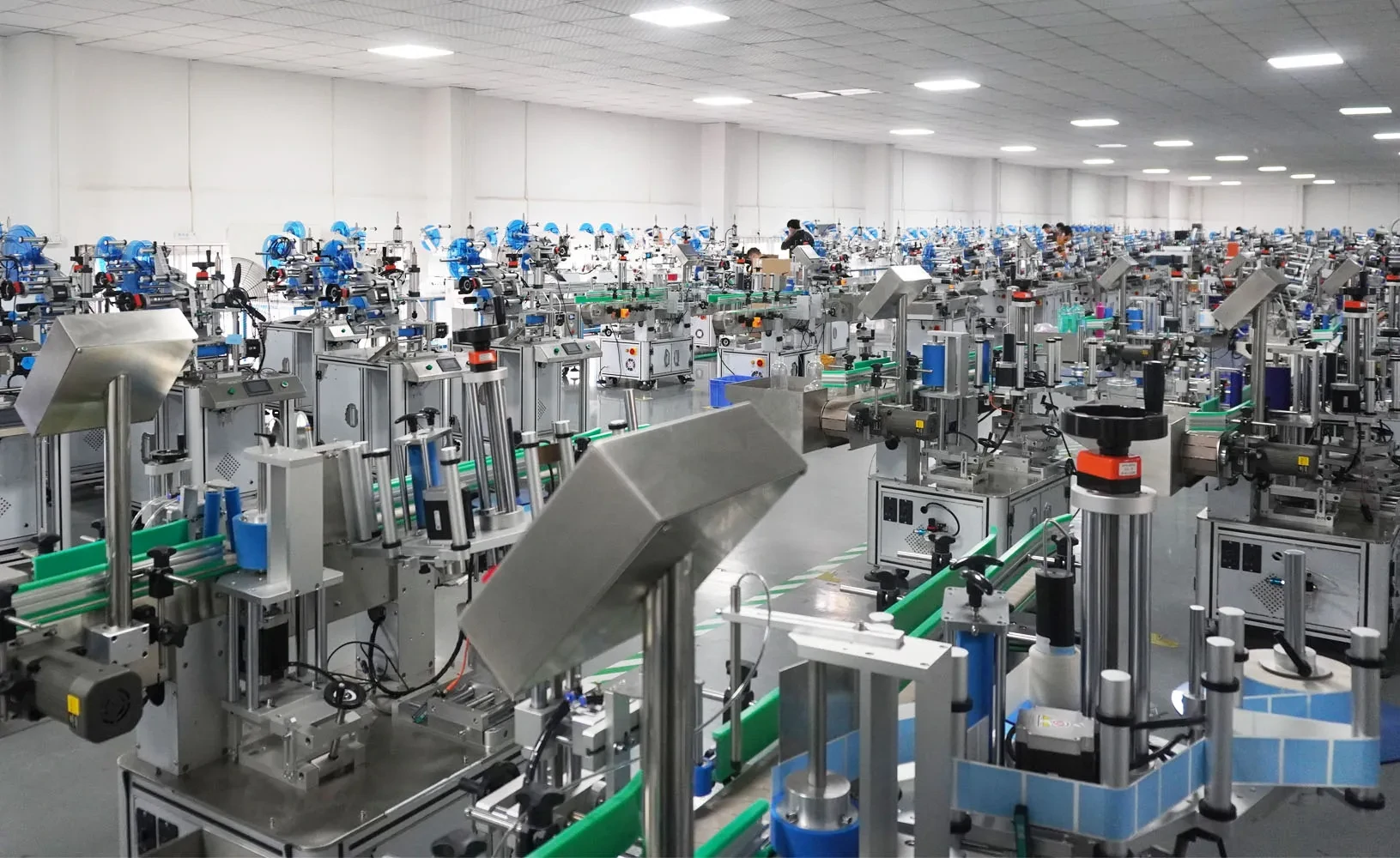
FAQ
In the U.S., perfumes are regulated by the FDA based on their purpose. If for perfume, they are treated as cosmetics. If for sleep aids, they are classified as drugs.
Drugs require FDA approval before sale. Cosmetics, like perfumes, are regulated by the FDA but don’t need pre-sale approval, though they must meet labeling standards.
Yes, fragrance ingredients must be listed, even in “fragrance-free” products, to avoid allergens. Missing or unclear information can result in misbranding.
Fragrance can be listed as “fragrance” or “parfum” without disclosing the exact ingredients, as per the Fair Packaging and Labeling Act.
Labels must include usage instructions, safety restrictions, and necessary warning statements to prevent health hazards.

